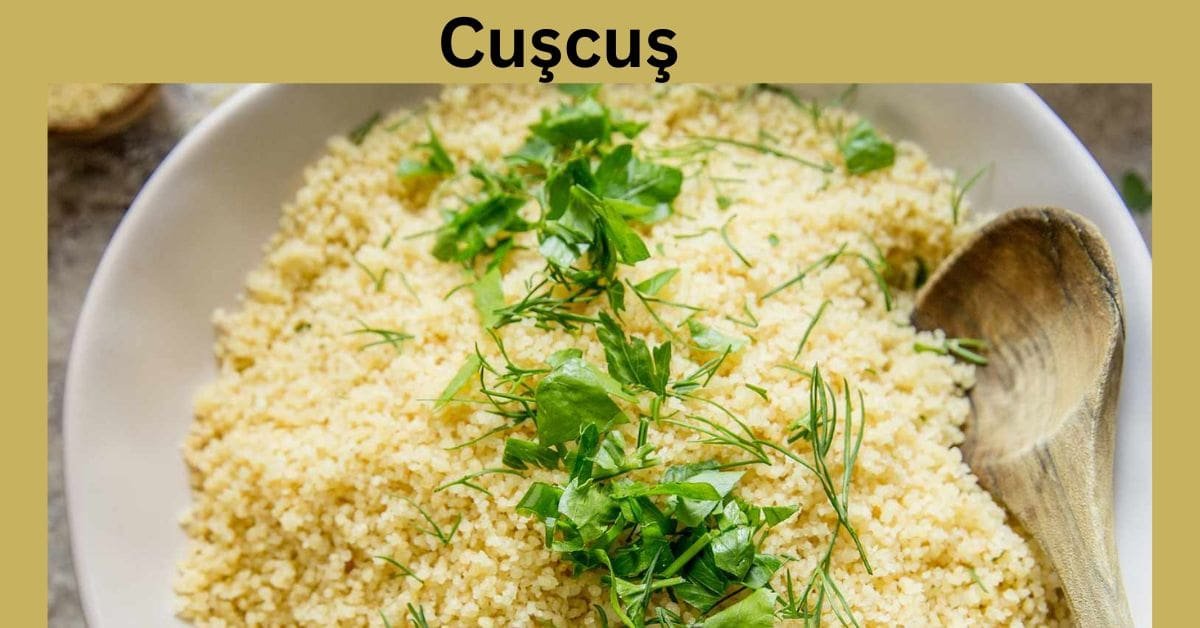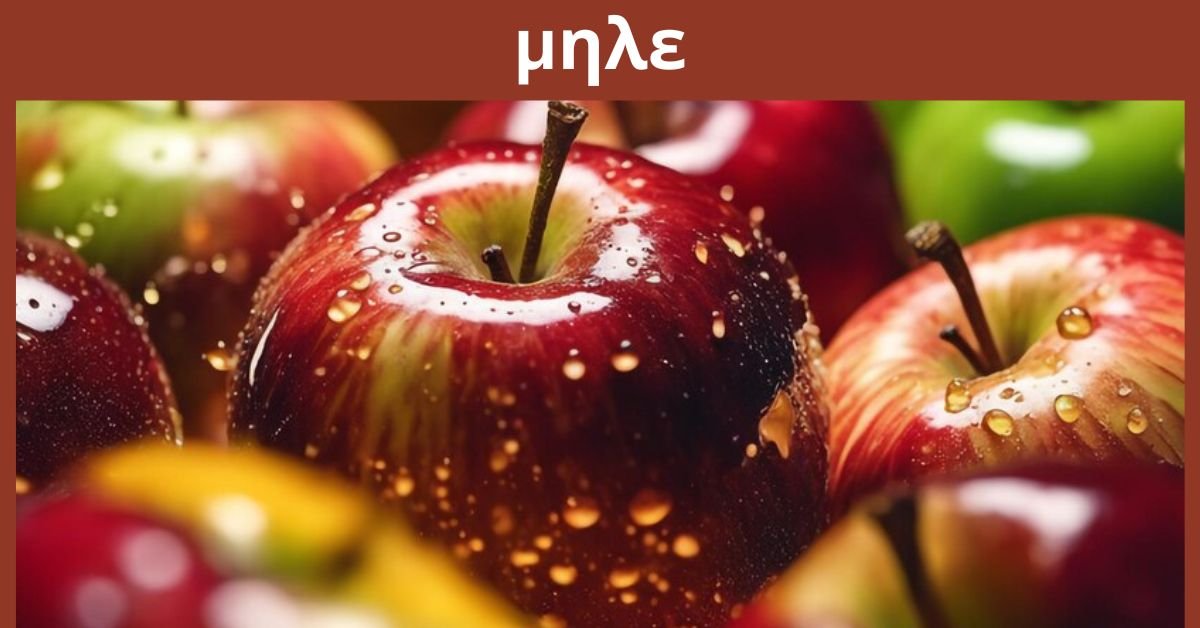Cuşcuş is a versatile granular pasta made from semolina wheat, commonly used in North African, Mediterranean, and Middle Eastern cuisines. It can be prepared by traditional steaming or quick-cooking methods.
To know further about Cuşcuş, Read our article without skipping any of the parts!
Introduction To Cuşcuş – For Your Knowledge!
Cuşcuş is a versatile and popular dish made from granulated semolina, which is derived from wheat. It is a staple food in many cultures and is known for its light, fluffy texture and ability to absorb flavours from accompanying ingredients. Cuşcuş is often used as a base for a variety of dishes, from salads to hearty meals.
Origin And History Of Cuşcuş – Let Me Explain!
Cuşcuş has ancient roots, originating in North Africa where it has been a traditional food for centuries. The dish has evolved over time and spread to various parts of the world, including the Mediterranean and Middle Eastern regions. Its history reflects a rich blend of cultural influences, making it a significant part of many culinary traditions.
Types Of Cuşcuş – Read Properly!
Traditional Cuşcuş:
Traditional cuşcuş is made from semolina wheat and is typically steamed in a special pot called a couscoussier. This method ensures that the cuşcuş grains remain light and fluffy, making it a popular choice for both simple and elaborate dishes.
Instant Cuşcuş:
Instant cuşcuş is pre-steamed and dried, allowing for a quick and easy preparation. It requires only a few minutes of soaking in hot water or broth, making it a convenient option for busy lifestyles.
Whole Wheat Cuşcuş:
Whole wheat cuşcuş is made from whole grain semolina, offering additional fibre and nutrients compared to traditional cuşcuş. This variety provides a nuttier flavour and is a healthier option for those seeking to increase their dietary fibre intake.
Gluten-Free Cuşcuş:
Gluten-free cuşcuş is made from alternative grains such as corn, rice, or quinoa. It is an excellent option for individuals with gluten sensitivities or celiac disease, allowing them to enjoy the benefits of cuşcuş without any adverse effects.
Nutritional Value Of Cuşcuş – Know The Full Details!
Macronutrients In Cuşcuş:
Cuşcuş is rich in carbohydrates or carbs, providing a good source of energy by providing ATP (A rich form of energy). It contains moderate amounts of protein and very little fat, making it a balanced addition to a variety of meals. The macronutrient profile of cuşcuş makes it a versatile food that fits well into many dietary plans.
Micronutrients And Vitamins In Cuşcuş:
Cuşcuş is a good source of essential vitamins and minerals. It contains selenium, which supports immune health, and B vitamins that aid in energy metabolism. Whole wheat and fortified cuşcuş varieties can also provide additional nutrients such as iron, magnesium, and fibre.
Cooking Methods For Cuşcuş – Pick Up The Notebook!
Basic Cuşcuş Preparation:
Basic cuşcuş preparation involves combining cuşcuş grains with boiling water or broth, then letting it steam or sit covered until it becomes light and fluffy. This simple method forms the foundation for many cuşcuş dishes.
Steaming Cuşcuş:
Steaming cuşcuş is the traditional method and ensures a light, airy texture. Using a couscoussier or a steamer, cuşcuş is steamed until it reaches the desired consistency, making it perfect for pairing with a variety of stews and sauces.
Microwave Cuşcuş Cooking:
Microwave cuşcuş cooking offers a quick and convenient alternative. By combining cuşcuş with water or broth in a microwave-safe bowl and heating it, you can achieve a similar result to traditional steaming in a fraction of the time.
Popular Cuşcuş Recipes – Read Without Skipping Any Of The Parts!
Vegetable Cuşcuş:
Vegetable cuşcuş incorporates a mix of fresh or roasted vegetables into the cuşcuş, creating a colourful and nutritious dish. This recipe is ideal as a side dish or a light main course.
Cuşcuş Salad:
Cuşcuş salad is a refreshing and versatile dish that can be made with a variety of ingredients such as cucumbers, tomatoes, herbs, and a tangy dressing. It’s perfect for picnics or as a healthy meal option.
Spiced Cuşcuş With Meat:
Spiced cuşcuş with meat combines cuşcuş with seasoned meat, such as lamb or chicken, to create a hearty and flavorful dish. This recipe often includes spices and herbs that enhance the cuşcuş and meat’s natural flavours.
Sweet Cuşcuş Dishes:
Sweet cuşcuş dishes offer a unique twist on traditional cuşcuş by incorporating fruits, nuts, and sweeteners. These dishes can be served as desserts or as a sweet complement to other meals.
Cuşcuş In Different Cuisines – The Cooking Traditions!
Cuşcuş In North African Cuisine:
In North African cuisine, cuşcuş is a central dish often served with tagines or stews. It’s traditionally steamed and served with a variety of meats and vegetables, reflecting the rich culinary heritage of the region.
Cuşcuş In Mediterranean Cuisine:
Mediterranean cuisine uses cuşcuş in a variety of dishes, from salads to side dishes. It’s often paired with fresh herbs, olives, and seafood, reflecting the region’s emphasis on fresh and vibrant flavours.
Cuşcuş In Middle Eastern Cuisine:
In Middle Eastern cuisine, cuşcuş is used in dishes such as pilafs and served alongside grilled meats and vegetables. The spices and flavours of Middle Eastern cooking enhance the cuşcuş, making it a popular and versatile ingredient.
Health Benefits of Cuşcuş – Read The Advantages!
Cuşcuş For Weight Management:
Cuşcuş can be a beneficial addition to a weight management plan due to its low-fat content and moderate calorie count. It provides a satisfying and filling meal option that can help with portion control and overall caloric intake.
Cuşcuş For Digestive Health:
The dietary fibre found in whole wheat cuşcuş supports digestive health by promoting regular bowel movements and improving overall gut function. This can contribute to better digestion and reduce the risk of gastrointestinal issues.
Cuşcuş As A Protein Source:
Cuşcuş provides a moderate amount of protein, which is essential for muscle repair and growth. While not a complete protein source, it can be combined with other protein-rich foods to create a balanced meal.
Cuşcuş In the Modern Diet – Must Check This!
Cuşcuş for Vegans and Vegetarians:
Cuşcuş is a versatile ingredient that fits well into vegan and vegetarian diets. It can be combined with plant-based proteins, vegetables, and legumes to create nutritious and satisfying meals.
Incorporating Cuşcuş into Daily Meals:
Incorporating cuşcuş into daily meals is easy due to its versatility. It can be used as a base for salads, served with stews and sauces, or included in various recipes to add texture and flavour.
How Much Does It Cost to Make Cuşcuş? – Budget Friendly Diet!
The cost of making cuşcuş varies depending on the type and additional ingredients used. Traditional cuşcuş is relatively inexpensive, while speciality varieties like whole wheat or gluten-free cuşcuş may cost more. Overall, cuşcuş is an affordable and budget-friendly food option.
Buying And Storing Cuşcuş – Safe Your Money!
Where To Buy Cuşcuş:
Cuşcuş can be purchased at most grocery stores, particularly in the international or speciality foods section. It is also available online from various retailers, providing convenient options for purchasing.
How To Store Cuşcuş:
Cuşcuş should be stored in an airtight container in a cool, dry place to maintain its freshness. Proper storage helps prevent moisture and pests from affecting the quality of the
Frequently Asked Questions:
Can cuşcuş be frozen?
Yes, cuşcuş can be frozen for up to two to three months. Be sure to cool cuşcuş completely before freezing and store it in an airtight container.
Is cuşcuş suitable for people with gluten intolerance?
Traditional cuşcuş contains gluten, but gluten-free versions are available for those with gluten sensitivities or celiac disease.
How can I make cuşcuş more flavorful?
Add herbs, spices, or broth to the cuşcuş while cooking to enhance its flavour. Mixing in vegetables or proteins can also add variety.
What if my cuşcuş turns out dry?
If cuşcuş is dry, add a little more liquid (water or broth) and gently fluff it with a fork to rehydrate.
How can I fix clumpy cuşcuş?
To fix clumpy cuşcuş, add a small amount of warm liquid and use a fork to separate the grains. Steaming or reheating can also help.
Conclusion:
In A Nutshell, Cuşcuş is a remarkable and versatile food that has stood the test of time, finding its way into diverse cuisines around the world. Its rich history, coupled with its ease of preparation and adaptability, makes cuşcuş a staple in both traditional and modern kitchens. Whether you’re using it as a base for a hearty meal, a refreshing salad, or a sweet dish, cuşcuş offers a unique blend of texture and flavour that enhances any dish.








